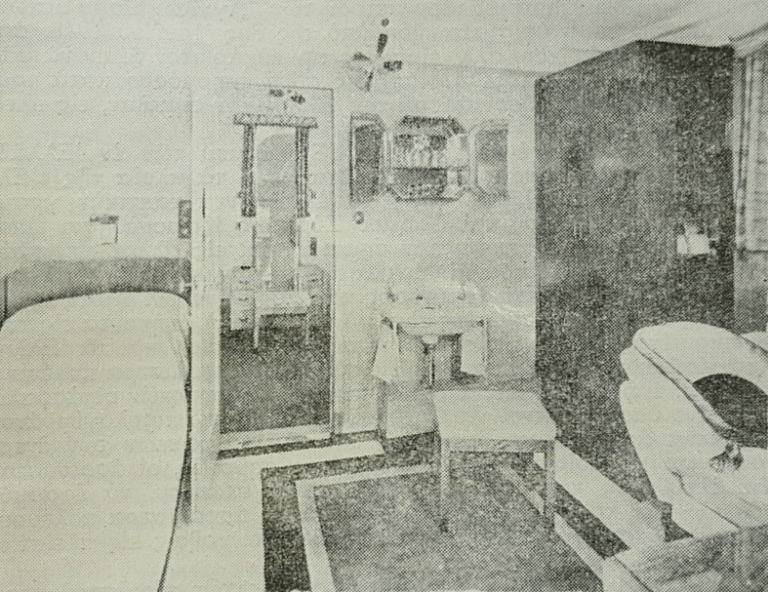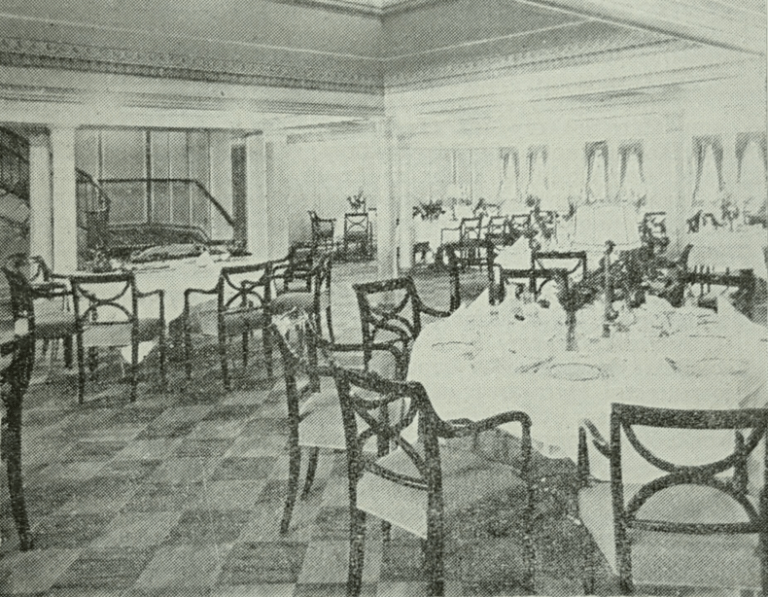
The historic passenger ship Nea Hellas brought tens of thousands of Greeks to America, enabling them to fulfill their dreams of a better life. Between the years 1939 to 1955, this steamship was the main escape route by which thousands fled poverty, Nazi Germany, and the difficult postwar years in Europe.
Especially during the last years of her service, the ship helped reunite Greeks with their loved ones who had already settled in the land of freedom.
The Nea Hellas was built in the years after WWI in Glasgow, Scotland. Christened as the Turbine Steam Ship (T.S.S.) Tuscania, it went into service in 1921. At a weight of 16,991 tons, it was considered an example of “state of the art” marine engineering at the time.
The ship was sold to the General Steam Navigation Company of Greece, which was owned by a well-established Greek shipping family, the Goulandris brothers. They wanted to re-establish a trans-Atlantic service between Greece and the U.S. which had been interrupted in October 1935.
The 177-meter (531 feet) long ship was renamed Nea Hellas (meaning “New Greece”) and arrived in the Athenian port of Piraeus on the morning of March 8, 1939.
Nea Hellas: the state-of-the-art vessel with six decks
The journal Naftika Chronika (Nautical Chronicles) described how thousands of Greeks came to the King Constantine Pier in the port of Piraeus to get a glimpse of the state-of-the-art vessel. “People who descended to the great harbor, saw a massive and very elegant ship with six decks in front of them,” the journal wrote.
The ship had first, second (then known as “tourist”), and third-class cabins as well as restaurants and halls. Naftika Chronika reported that in all three levels of accommodations, the passengers found spacious halls with good quality furnishings, and the interiors were nicely decorated.
“The floors were completely refurbished in 1938, and given a rubber coating,” according to the journal. “The walls of the communal spaces were lined with luxurious woods, while the furniture in first class was covered with silk fabrics.”


The Nea Hellas never attained the “glamour ship” status of some of her contemporaries, such as the Queen Mary, the Mauretania, and the Normandie. However, the ship was tastefully furnished and quite comfortable.
Its maiden transatlantic voyage from Piraeus to New York began on May 19, 1939.
Capable of a speed of sixteen knots, the Nea Hellas would take two weeks to transport the eight hundred passengers and two hundred crew members to the other side of the Atlantic.
However, tickets on the ship were not cheap at all. Eli Pinhas, whose family sailed from Piraeus to New York in 1951, wrote that “the fare was $205 each for my parents, my 3 ½ year old sister was half price—$102.50—and my 9-month-old brother was $10. Tax was $16. The total for all four tickets was $538.50.”
Grand welcome of the ship in New York
The New York Herald Tribune noted the first arrival of the Nea Hellas in New York. It reported that during her first stay there, a series of parties and dinners celebrating her arrival were planned for the New York business, social, and diplomatic community.
The Herald Tribune, in what amounts to a remarkable historical gift to the families of the passengers and crew, also recorded the names of some of the passengers and Captain Cardaras.
Unfortunately, the festivities for the ship were short lived. Within months of her maiden crossing, WWII broke out in Europe, and the Nea Hellas was placed under allied control, being put into service as troop transport.
During the next seven years the ship was affectionately dubbed the “Nelly Wallace” by her many passengers in the armed services.
After the war, the Nea Hellas resumed its service on the Piraeus-New York route until 1955 when it was renamed the New York, when it went on to ply the northern Europe-America route.
By 1959, the ship had reached the grand age of thirty-seven years.
On November 14, 1959 it returned to its home port of Piraeus for the last time, twenty years after its first departure as the pride of the Greek nation.
On August 19, 1961 the ship left Piraeus for Onomichi, Japan where it met its sad but inevitable fate in the scrap yards.
Like many great ships long gone, it left an indelible memory for those whose lives were touched by it. It became a great symbolic bridge in their lives.
Jim Kalafatis, who made four crossings on Nea Hellas in the early 1950s wrote that the ship would always be one of his happiest and most treasured childhood memories.
Kalafatis recalled recently, “I remember the ship’s captain letting me blow her steam whistle at noon to allow passengers to set their watches to the changing time zones. What a thrill to a seven year old! To a young boy who called the ‘Nea Ellas’ home for a total of eight weeks, she will never be forgotten.”
See all the latest news from Greece and the world at Greekreporter.com. Contact our newsroom to report an update or send your story, photos and videos. Follow GR on Google News and subscribe here to our daily email!



